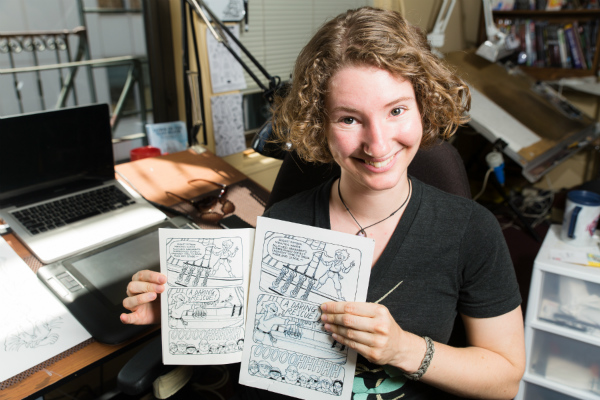 Lucy Bellwood‘s delightful run of nautically themed minicomics, Baggywrinkles, combine her own autobiographical experiences sailing on tall ships along with maritime-based educational strips. I reviewed the first five issues here at Broken Frontier earlier this year and had this to say of the book at the time: “We all know that comics as a medium have a unique facility for sharing and communicating personal experience with their readership, but you’ll find few series that do it with such a sheer and unremitting sense of joy than Lucy Bellwood’s Baggywrinkles.”
Lucy Bellwood‘s delightful run of nautically themed minicomics, Baggywrinkles, combine her own autobiographical experiences sailing on tall ships along with maritime-based educational strips. I reviewed the first five issues here at Broken Frontier earlier this year and had this to say of the book at the time: “We all know that comics as a medium have a unique facility for sharing and communicating personal experience with their readership, but you’ll find few series that do it with such a sheer and unremitting sense of joy than Lucy Bellwood’s Baggywrinkles.”
This week Bellwood (pictured above, photo by Jeremy Francis) launched a Kickstarter campaign to publish a collected edition of her acclaimed comics; one that proved so popular that it had powered past its target by just its second day! Today, in my ongoing series of ‘Small Press Spotlight on…‘ interviews in this column, Lucy chats with me about how she discovered the world of tallships, crowdfunding the Baggywrinkles compilation, the nature of autobio work, and the myth of “walking the plank”…
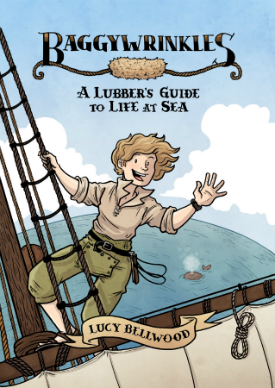 ANDY OLIVER: As someone who has actually detailed her journey into comics in your autobiographical offering True Believer can you give us some background on how your love of the medium pulled you in to pursuing the form as a career in the first place?
ANDY OLIVER: As someone who has actually detailed her journey into comics in your autobiographical offering True Believer can you give us some background on how your love of the medium pulled you in to pursuing the form as a career in the first place?
LUCY BELLWOOD: I feel like True Believer is actually kind of late in the game as far as my interest in comics goes—though it chronicles the more important moment when I decided to really go for it full-time. I grew up in a house with a lot of Calvin and Hobbes, plus some classic books by George Booth, Quentin Blake, Ronald Searle, and others. My mother was a cartoonist running her own business before I was born, and though the business went into hibernation once I hit the scene, her love of classic British cartooning stayed strong. I was surrounded by the stuff as a child. As far as comic books go, though, I had next to nothing.
My real introduction to the medium came through webcomics when I was still in middle school. Reading autobio stories like Erika Moen’s DAR or slice-of-life serials like Danielle Corsetto’s Girls With Slingshots and Scott Kurtz’s PvP had a huge impact on me. Webcomics offered a portal with very few gatekeepers (there’s terrible early work of mine still on DeviantArt to prove it), and I started to nurse dreams of becoming an animator or a cartoonist early in high school.
I detoured pretty hard into theater after that, and went to a small liberal arts school telling myself that if I was really interested I could always get an art degree later, but by the end of undergrad I knew that I had to go back to comics. Moving to Portland and attending the Stumptown Comics Fest as my first convention made it clear to me that I was hooked. After that I signed up for a Summer Session workshop at the Center for Cartoon Studies in White River Junction, Vermont and I was done for.
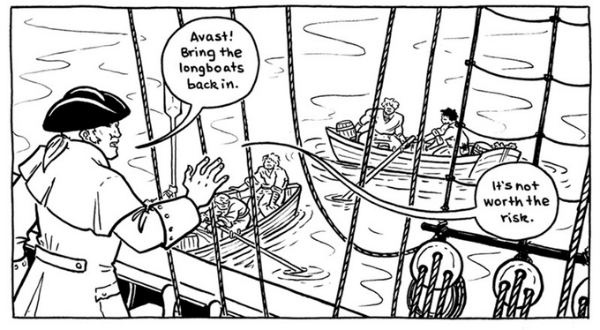 You’re part of the Portland-based Periscope Studio. How did you become involved with that comics collective?
You’re part of the Portland-based Periscope Studio. How did you become involved with that comics collective?
Again, I have blame Erika for this one. While she was still writing and drawing DAR, she got laid off from her day job and began working out of Periscope part-time because she had friends there. Through her autobio comics I had this vision of a place full of skillful, friendly pros all working side by side and helping each other grow. The idea of it was intoxicating. I’d been seeking comics community wherever I went after the workshop at CCS, which was the first time I’d ever really been in a group of dedicated comics folks, rather than just being “the artist in the class”. I had a great year at the Independent Publishing Resource Center’s Comics & Independent Publishing Certificate Program, but I wanted something more established and more focused on draftsmanship and commercial application. Periscope was that beacon for me all through college.
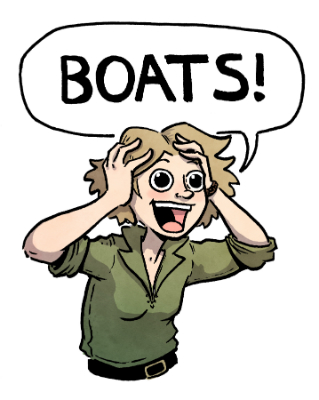 As a stopgap I started an open-door cartoonist meetup that gathered every Thursday in my house for two and a half years. That group grew from a few dedicated IPRC students to a gaggle of established and up-and-coming creators to a landing pad for new comics folk looking for camaraderie and critique. I invited strangers from conventions and roped in comics pals I wanted to get to know better—it was a great thing for me (and, I hope, for a lot of other people).
As a stopgap I started an open-door cartoonist meetup that gathered every Thursday in my house for two and a half years. That group grew from a few dedicated IPRC students to a gaggle of established and up-and-coming creators to a landing pad for new comics folk looking for camaraderie and critique. I invited strangers from conventions and roped in comics pals I wanted to get to know better—it was a great thing for me (and, I hope, for a lot of other people).
At that time the Studio was still running its Mentorship Program, so after graduating and funding True Believer through Kickstarter I threw my hat in the ring to go work there for three months. I couldn’t believe it when they accepted me—I still felt like such a fraud. But Periscope turned out to be everything I’d dreamed of. After learning so much from everyone in the time I was there, they invited me to stay on trading social media wrangling and blog-writing for desk space. It was a pretty perfect fit. In January of 2014 I finally became a full-time member, and it remains one of the most important events in my entire career. Periscope has taught me so much and opened so many doors. I can’t imagine where I’d be without it.
I first discovered your work when I reviewed Baggywrinkles for Broken Frontier earlier this year. Before we talk further about the comic here’s the obvious question: what’s the meaning of its rather distinctive title?
A baggywrinkle is furry, cylindrical bundle of old rope used for preventing chafing between a ship’s sails and the lines that surround them. It’s one of the most distinctive features of a ship’s rigging, made all the more ludicrous by the fact that you spend a LOT of time explaining what it is to visitors—a hard sell when it’s got such a weird name. I mean, look at this thing:
You bring a lost age of sailing to life with such infectious enthusiasm in Baggywrinkles. How did you first discover the world of tall ships?
Purely by accident! I mentioned I was a theater kid in high school, which got me into my hometown’s summer Shakespeare Festival (“Alas, poor Yorick”), which got me going to Renaissance Faires (fun corsets, but not much to do as a spectator), which got me into pirates (Inaccurate History! Romance! Adventure!), which got me subscribed to No Quarter Given (a quarterly piratical magazine because…of course), which got me Googling around for replica vessels still sailing today.
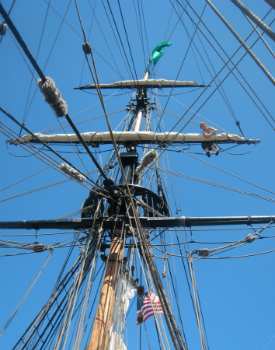 The list I stumbled upon displayed the Alvei as its first entry, and clicking through to the ship’s website I saw a banner that proclaimed: “Live the life of an 18th-Century Tall Ship Sailor! Crew with us in the South Pacific!” It blew my mind. Not only were there ACTUAL TALL SHIPS still sailing the world, but I could go CREW ON THEM? With ZERO SAILING EXPERIENCE? Needless to say the South Pacific was a little far for a junior in high school with college applications to complete, so I set my sights closer to home and found the Lady Washington.
The list I stumbled upon displayed the Alvei as its first entry, and clicking through to the ship’s website I saw a banner that proclaimed: “Live the life of an 18th-Century Tall Ship Sailor! Crew with us in the South Pacific!” It blew my mind. Not only were there ACTUAL TALL SHIPS still sailing the world, but I could go CREW ON THEM? With ZERO SAILING EXPERIENCE? Needless to say the South Pacific was a little far for a junior in high school with college applications to complete, so I set my sights closer to home and found the Lady Washington.
The Lady runs up and down the West Coast of the US year-round doing education and outreach with school groups and the public. She and her sister ship, the Hawaiian Chieftain, reenact naval battles, appear at festivals, and generally serve as floating ambassadors of maritime history. They also offer a volunteer program called Two Weeks Before the Mast where the uninitiated can join up and learn to sail. After sampling one of their Battle Sails in January (the ships pass within 20 miles of my hometown every winter), I flung myself into the program during Spring Break of my senior year and didn’t look back.
(Above right image – Bellwood aloft!)
For those among the BF readership discovering Baggywrinkles through this interview can you give us a rundown of its mix of autobiography, maritime minutiae and nautical history to date?
Baggywrinkles offers me the perfect chance to tell some exciting tales of real adventure on the high seas while passing on some of the weird and fascinating knowledge one accrues while working on a tall ship in the 21st century. Fact-checking can be tricky, since so much of the lore is oral tradition and hearsay, but my hope is that readers can a) discover that tall ship sailing is alive and well in the modern age, b) learn something new about the Golden Age of Sail, and c) realize that there are better ways to kill someone than making them walk the plank. Also: every time I hear that a reader has signed up to volunteer on the Lady or another tall ship as a result of reading my work, my heart glows.
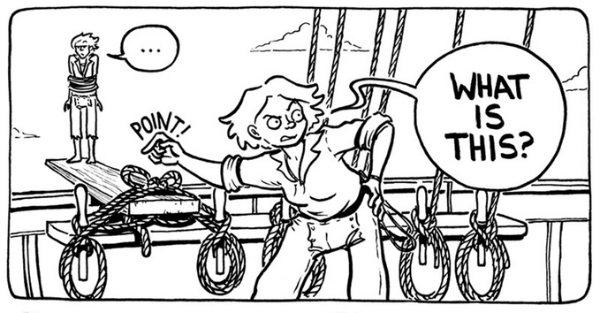
You’ve launched a Kickstarter campaign to fund a collected edition of Baggywrinkles (see the Kickstarter video below). What extras can fans of the series expect? Can you elaborate on that unprinted sixth issue that will be included in the compilation?
In terms of special rewards, my biggest focus (after the book itself) is on a limited edition run of two-color letterpress prints with Twin Ravens Press. We’ve been talking about collaborating for a long time and this campaign seemed like the perfect opportunity. The image we’ve chosen is a guide to sailors’ tattoos poster I helped design for the Vancouver Maritime Museum a few years ago for their “Tattoos & Scrimshaw: The Arts of the Sailor” exhibit, which has since toured to several maritime museums along the West Coast! I just got the pack of paper samples from the printer today and I can safely say this thing is going to be really pretty.
Scurvy Dogs, the final chapter in the book, is the latest installment in the Baggywrinkles series. It covers a historical survey of scurvy, including some of the wacky theories about causes and cures through the ages. I learned SO MUCH working on this comic with my co-writer Eriq Nelson, and I think it really showcases the best of what Baggywrinkles can be—educational, playful, and more than a little gross.
https://www.kickstarter.com/projects/lucybellwood/baggywrinkes-a-lubbers-guide-to-life-at-sea
You also have a rather special stretch goal reward in mind as well. What can you reveal about that?
As of writing this interview, the campaign has exceeded its base funding goal(!!!!!!), so I’ll focus on what’s coming next: my goal, as a print-obsessed traditionalist, is to make as fancy a book as I can get away with. The stretch goals currently on the campaign docket include nautical endpapers (16k—funded!), spot gloss on the covers (18k), sticker sheets (19k), and (the extra special goal you allude to) a fully-colored version of the book with colorists Joey Weiser and Michele Chidester (20k)!
The sample pages I’ve received from Joey and Michele look incredible—I’ve shared a couple on the campaign page already. Plus they’ve just come from coloring the re-release of Chris Schweizer’s nautical “Crogan Adventures” installment Catfoot’s Vengeance, so I know they’re going to knock this out of the park.
If we blow through all that then I’m going to start running the logistics on including a hardcover version of the book, since several folks have expressed an interest in having one. That opens up possibilities for ribbon bookmarks, dust jackets, embossing, and more. WHO KNOWS. Currently my biggest dream is for color.
When I reviewed those first five issues of Baggywrinkles I talked about how you shared such an unrelenting sense of passion for your subject matter. What is it about comics as a form that makes it such an effective medium for communicating personal experience do you think?
Comics allow for so much variety in the depiction of experience—you can play with people’s expectations, segue between infographics and straight-up narrative depictions of real events, and open a door that makes the fantastical possible. If I’d known tall ship sailing was an option at 8 or even 12, my life might’ve been very different. A comic can take you many places, but an autobio comic holds the key to a story that actually happened. It makes the universal personal and the personal universal.
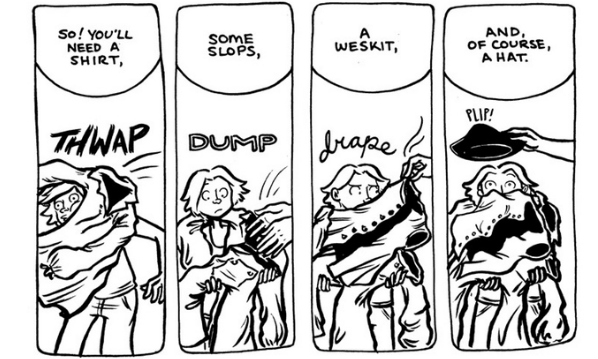 I pitch Baggywrinkles to many people at conventions, and there’s always this moment when I point to this little postcard photo of the real Lady Washington and explain that I worked and lived on her and people’s eyes go wide with surprise and excitement. The comic draws you in, but the personal experience makes it real.
I pitch Baggywrinkles to many people at conventions, and there’s always this moment when I point to this little postcard photo of the real Lady Washington and explain that I worked and lived on her and people’s eyes go wide with surprise and excitement. The comic draws you in, but the personal experience makes it real.
Comics are also pretty unthreatening—at least I want that to be the case for the ones I make. Readers should get an accessible window into another person’s individual experience—one that hopefully resonates on a more basic human level. Even if you’re at the top of the main mast furling a t’gallant, you’re still a person. You’re still you. It humanizes the protagonist of the story and, by extension, encourages us as readers to think about all the people we encounter first and foremost as other humans.
Some of your other autobiographical comics material is more revealing on a personal level. I’ve interviewed a number of autobio creators this year and one recurring point of discussion has been the sense of vulnerability that comes with the revelatory details of slice-of-life work. How much is that a consideration when working in that field?
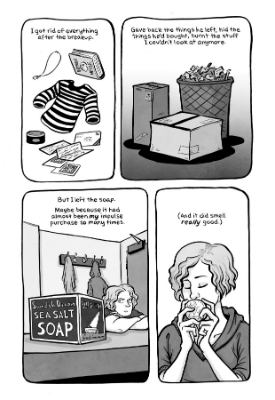 I believe very strongly in telling stories that are meaningful to me. If I’m not kept awake at night by the content, who’s to say anyone else will find it the least bit interesting? That being said I’ve done some stuff in the last year that’s definitely entered more raw territory than I usually explore with my rabid enthusiasm about ships and the sea. I try not to censor myself when making comics about, say, a difficult breakup, but it’s also hard to make work that takes other people into consideration.
I believe very strongly in telling stories that are meaningful to me. If I’m not kept awake at night by the content, who’s to say anyone else will find it the least bit interesting? That being said I’ve done some stuff in the last year that’s definitely entered more raw territory than I usually explore with my rabid enthusiasm about ships and the sea. I try not to censor myself when making comics about, say, a difficult breakup, but it’s also hard to make work that takes other people into consideration.
Salt Soap (right), the story I’m referring to, had a bit of an advantage because I wrote it a couple years ago—many of the wounds documented therein have faded. I even had the ex in question read it before it went live—and that was nerve-wracking because of course you can’t distill every complex element of a broken relationship into seven pages of pictures and words! How could you? But he’s a storyteller in his own right and was incredibly gracious about letting it go out into the world.
Something else I think about a great deal is how dramatic the response to those types of comics is. People love boats, sure, but they also really love stories of heartbreak or sexual self-discovery. Those pieces generate a lot of traffic, even though they don’t revolve around an easy, central theme like Baggywrinkles. I often look to Lucy Knisley as an example of harnessing this sort of thing, since she ran a really lovely collection of her assorted autobio work under the banner Stop Paying Attention, which stood apart from her contained (also autobio) book projects. It’s something I think a lot about pursuing.
I’m certainly more drawn to making my personal experiences available as lenses through which other people can share their stories, rather than drumming up an entire fantasy world from scratch. It’s always come more easily to me, even with the peculiar challenges of finding out how much inner landscape is just enough to share.
Sample pages from the first three issues of Baggywrinkles
The versatility of your art is showcased to great effect in Baggywrinkles – from busy, comedic, near-slapstick cartooning in places to a more realistic style in the fifth issue’s historical account of the Lady Washington. How do you feel your approach to the page has evolved over the course of the years you’ve been creating the comic?
One of the hardest things about putting together this book was acknowledging that I was going to publish a really handsome, well-designed volume that would feature the very first comic I ever drew front and center. I know everyone’s first book is kind of like this—a historical tour through your development as an artist—but I really do feel like I’ve come a long way since I started Baggywrinkles in 2010. It’s also only been one of many projects on my plate, so I feel like each issue represents a different leap in my career.
Bringing myself to look at the first couple issues again, I realize that some stuff I really enjoyed about that early work was my willingness to play with different page layouts. There was a lot of unbridled visual enthusiasm in those comics, and I think that as my drawing skills became tighter I lost a little bit of that playfulness. Fortunately (as I think I said earlier) Scurvy Dogs gets back to that tradition with a lot of detail and a load of silly slapstick comedy. Man, I love drawing slapstick. Love it.
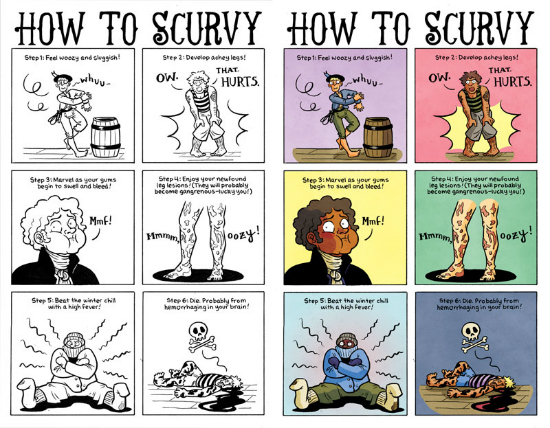 In practical terms I now rough in most of my comics pretty exclusively with a Cintiq 12WX in Manga Studio 5EX. I love the versatility of penciling digitally—I can move type and figures around, resize layouts to better accommodate edits, and drop reference images straight onto the page. But when it comes time to ink I’m still just more comfortable working in the real world. So these days I’ll print out my roughs onto great big Bristol pages and ink with Kuretake felt tip brushes and fixed-width PITT pens.
In practical terms I now rough in most of my comics pretty exclusively with a Cintiq 12WX in Manga Studio 5EX. I love the versatility of penciling digitally—I can move type and figures around, resize layouts to better accommodate edits, and drop reference images straight onto the page. But when it comes time to ink I’m still just more comfortable working in the real world. So these days I’ll print out my roughs onto great big Bristol pages and ink with Kuretake felt tip brushes and fixed-width PITT pens.
My favorite aspect of making comics is the formulaic way a story goes from a nebulous idea to tangible, physical object you can hold in your hand. Every stage of the process—from thumbnails to pencils to inks to color—feels more and more exciting because it brings you a completely different product from the one before. So even though I don’t use an Ames guide or ink with brush anymore, I still like to cling to those elements of the process that put me in touch with the real object in my hands.
You have a large body of work outside of your sailing strips of course. Could you give us a rundown of some of your other comics in the realms of autobio, fantasy and graphic journalism?
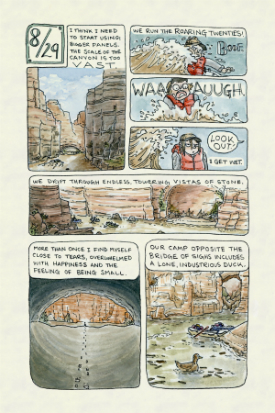 It feels like a blessing and a curse that I’ve been so all over the map in these first three years working freelance—it makes building a “single” brand difficult, but I’ve also enjoyed getting to dip my toe in a ton of fields.
It feels like a blessing and a curse that I’ve been so all over the map in these first three years working freelance—it makes building a “single” brand difficult, but I’ve also enjoyed getting to dip my toe in a ton of fields.
I’ve done comics journalism work about climate change and female Navy veterans at Guantanamo Bay for Symbolia Magazine, painfully honest autobio about social dance and sexuality for The Nib, adventurous travelogue comics about rafting through the Grand Canyon (Grand Adventure, left) and sailing aboard the last wooden whaling ship in the world, and straight-up playful fantasy world-building for Cartozia Tales. There’s also been several anthology contributions in there, plus some really meaningful guest comic runs for artists who inspired me to start in this field in the first place—Erika Moen, Danielle Corsetto, Paul Tobin & Colleen Coover, and Sam Logan spring to mind.
I’ve loved every minute of it, but I’m looking forward to narrowing my focus to projects that I’m really concentrating my full energy on in the coming months. (This is part of the reason I started a Patreon page in 2014—less running around doing freelance, more straight-up comics work!)
And finally what can we look forward to seeing from Lucy Bellwood in the future, post-Baggywrinkles Kickstarter?
More regular content, that’s for damn sure! Patreon has been an incredible boon in my professional life, and I’m reaching the point where I can focus more and more of my attention on churning out the kinds of important-to-me comics I’ve been talking about here with more regularity. Expect more short sailing stories, more snippets of maritime history, more autobio (I’ve been dying to do a piece about growing up as a dual citizen for SO LONG NOW), and maybe even a pitch for a new graphic novel about an unlikely intergenerational friendship. Overall my plan is to stay independent and keep churning out great content online with an eye to publishing a second book within the next couple years. Bless the Internet, it makes all of this possible.
You can back the Baggywrinkles Kickstarter campaign here.
For more on the work of Lucy Bellwood visit her website here. You can also follow Lucy on Twitter here.
For regular updates on all things small press follow Andy Oliver on Twitter here.





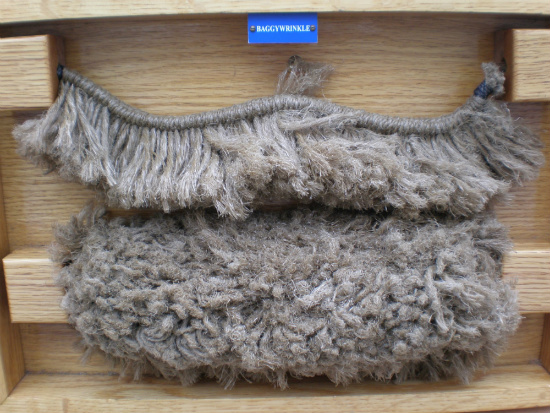
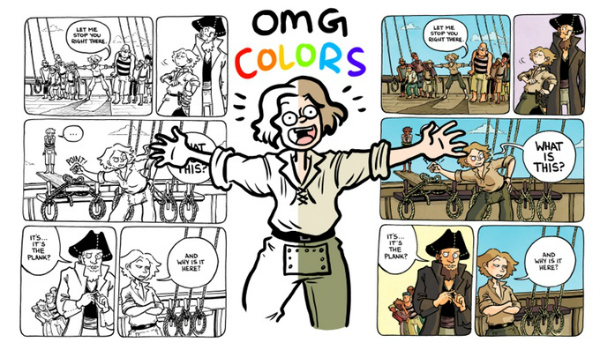
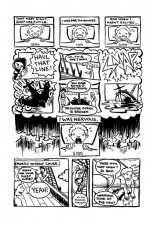
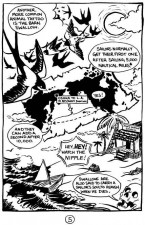
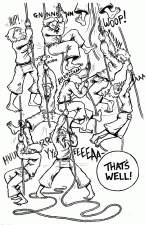
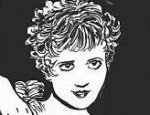
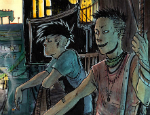
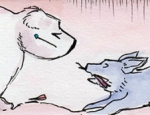
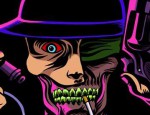
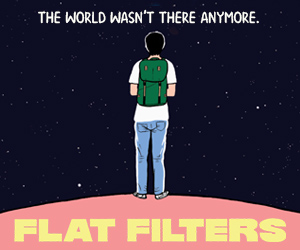
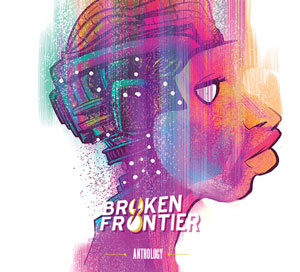
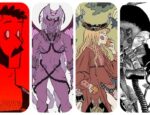
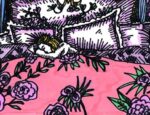
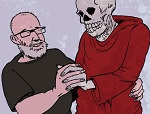
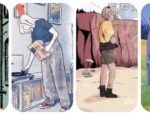
[…] Creators | Andy Oliver profiles Lucy Bellwood, creator of Baggywrinkles, a comic about real life on tall ships. [Broken Frontier] […]